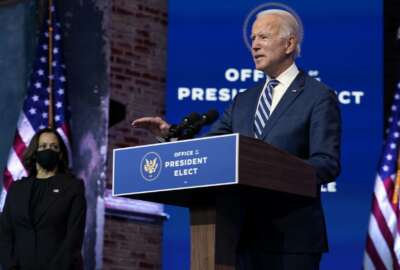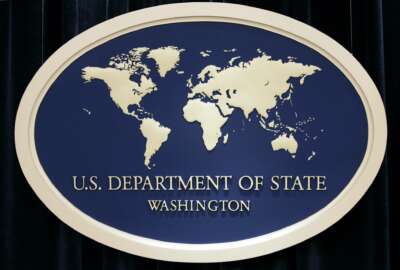

The agency earlier this year outlined a strategy to Congress to address these longstanding diversity and inclusion challenges, but an executive order from Presi...
For decades, watchdogs have pointed to the State Department’s challenges recruiting and retaining a diverse workforce, as well as promoting diverse talent to its higher ranks.
Both of those challenges could easily take the agency years, if not multiple administrations, to show that it’s headed in the right direction. But to tackle these problems, the State Department expected to release its 2020-2024 diversity and inclusion strategy this fall outlining ways it would rethink the way it recruits and retains talent.
While workforce diversity plans are commonplace for federal agencies, the State Department had brought in a broader pool of talent to draft this strategy. Carol Perez, the agency’s director-general of the Foreign Service and director human resources, told members of the House Foreign Affairs Committee in September that the strategy included input from 40 bureaus and 16 employee affinity groups.
“A culture of inclusion can take us from understanding diversity to valuing and successfully leveraging it,” Perez said. “This is not just a moral imperative, it is also a strategic imperative. Inclusion is essential to harnessing the best from all our teams to address new challenges.”
The same day Perez testified on Capitol Hill, however, President Donald Trump signed an executive order prohibiting race theory diversity training in federal agencies, effectively putting this work on hold.
According to a Reuters exclusive report, the State Department in October temporarily paused “all training programs related to diversity and inclusion” in accordance with the executive order. That announcement came after the Office of Personnel Management paused all agency diversity and inclusion training pending a mandatory review of these programs.
As for how the State Department might tackle these workforce problems under President-Elect Joe Biden, Linda Thomas-Greenfield, the transition team lead for State Department issues and the former director-general of the Foreign Service and human resources, said the “disturbing” Trump executive order is one of the first steps the agency needs to address order to resume work on its diversity strategy.
Thomas-Greenfield, now a senior vice president at the Albright Stonebridge Group, on Oct. 30 during a panel discussion hosted by Georgetown University’s Institute for the Study of Diplomacy, said the executive order prohibits agency officials from discussing intersectional systemic racism, even though she said those are the everyday experiences of those who work at the agency.
“There’s no way, given the current environment, they can even begin the process of dealing with diversity issues in a department when you can’t even use the word diversity, you can’t use the word inclusion. Right now, I think everybody in the building, they’re all at a kind of standstill,” she said.
While the State Department’s workforce has grown more diverse over nearly two decades, a Government Accountability Office report in January found that diversity hasn’t yet filtered up to the agency’s higher ranks.
While GAO found that racial and ethnic minorities make up 32% of the State Department’s workforce in 2018 – up from 28% in 2002 – the proportions of African Americans and women have fallen.
The agency also remains less diverse at the GS-13 level and above in the Civil Service, and at all ranks of the Foreign Service. GAO also found that minority workers were 16-to-42% less likely to receive promotions than white employees.
Jason Bair, the director of GAO’s International Affairs and Trade team, said the agency’s report from January reflects many of the same underrepresentation issues identified in a similar report from 1989.
The agency told auditors following the 1989 report that the diversity of its workforce would improve as incoming Foreign Service classes moved up the ranks for the agency. But more than 30 years after that report, Bair said GAO auditors remain concerned that they’re revisiting many of the same issues.
To make sustained progress in this area, agency leadership needs to set the tone from the top, but Bair said that message also needs to reverberate through the political leadership.
To hold agency executives accountable for improving diversity, Bair said that senior executives at GAO need to respond to a question in their annual performance appraisal asking how they supported the implementation of the agency’s workforce diversity plan.
“That was a question that was asked of me, and I knew that answer was going to have an impact on the rating that I get at the end of the year,” he said.
Barbara Bodine, director of Georgetown’s Institute for the Study of Diplomacy said these challenges don’t require funding or regulation as much as they require a change in the tone from leadership.
“This attitude has percolated down, and still is there for anyone who is not male, pale or Yale to try to get ahead,” Bodine said. “To be clear, diversity is not in opposition to a meritocracy, and the diplomatic corps is a meritocracy, or at least strongly aspires to be one. Diversity is actually the manifestation of a meritocracy.”
While recruitment remains a key component of building a more diverse workforce, Bodine said the real issue is retention.
“We are able to recruit a diverse workforce, we are finding it difficult to retain a diverse workforce, most especially into the ranks of the senior Foreign Service,” she said.
Retention needs to be a key component to diversity and inclusion efforts, Thomas-Greenfield said, because even though the pool of applicants for promotions has gotten more diverse, the success rate of those candidates getting those positions remains unclear.
In her 35 years in the Foreign Service, for example, Thomas-Greenfield said she never served as a deputy chief of mission, despite making it multiple shortlists for candidates.
“I realized that I didn’t get selected because there was nobody to insist that I be selected. I made the list, and the State Department could check a box and say, ‘Well, we are providing a diverse list of DCMs for ambassadors to choose, but they never actually looked deep into why those people were not selected,” she said.
Uzra Zeya, the former acting assistant secretary and principal deputy assistant secretary in the Bureau of Democracy, Human Rights, and Labor, now the CEO and president of the Alliance for Peacebuilding, said two-thirds of the State Department’s top jobs are still held by white males, while African American representation in the senior Foreign Service ranks is at a “crisis point,” having fallen from 9% in 2008 to just over 3% now.
Zeya said a deficit of diversity at the agency serves as a national security risk for the U.S. and doesn’t provide for a variety of viewpoints in key decisions.
“That failure to really correct that deficit, I believe very strongly undercuts the effectiveness of our diplomacy abroad, of our decision making internally. And really our ability to truly represent the American people, which is what diversity, which is what diplomacy is all about,” Zeya said.
As for diversity and inclusion efforts the State Department has already implemented, Perez, the agency’s current head of human resources, told the House Foreign Affairs Committee that under her tenure, the agency has the capacity of fellowship programs, reached out to affinity groups within the State Department and implemented unconscious bias training.
The State Department, she added, has also formalized the exit interview process to give outgoing personnel an opportunity to give a candid assessment of the agency’s diversity and inclusion efforts.
Copyright © 2024 Federal News Network. All rights reserved. This website is not intended for users located within the European Economic Area.
Jory Heckman is a reporter at Federal News Network covering U.S. Postal Service, IRS, big data and technology issues.
Follow @jheckmanWFED



